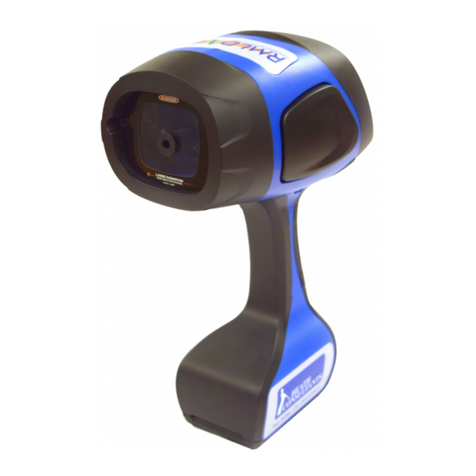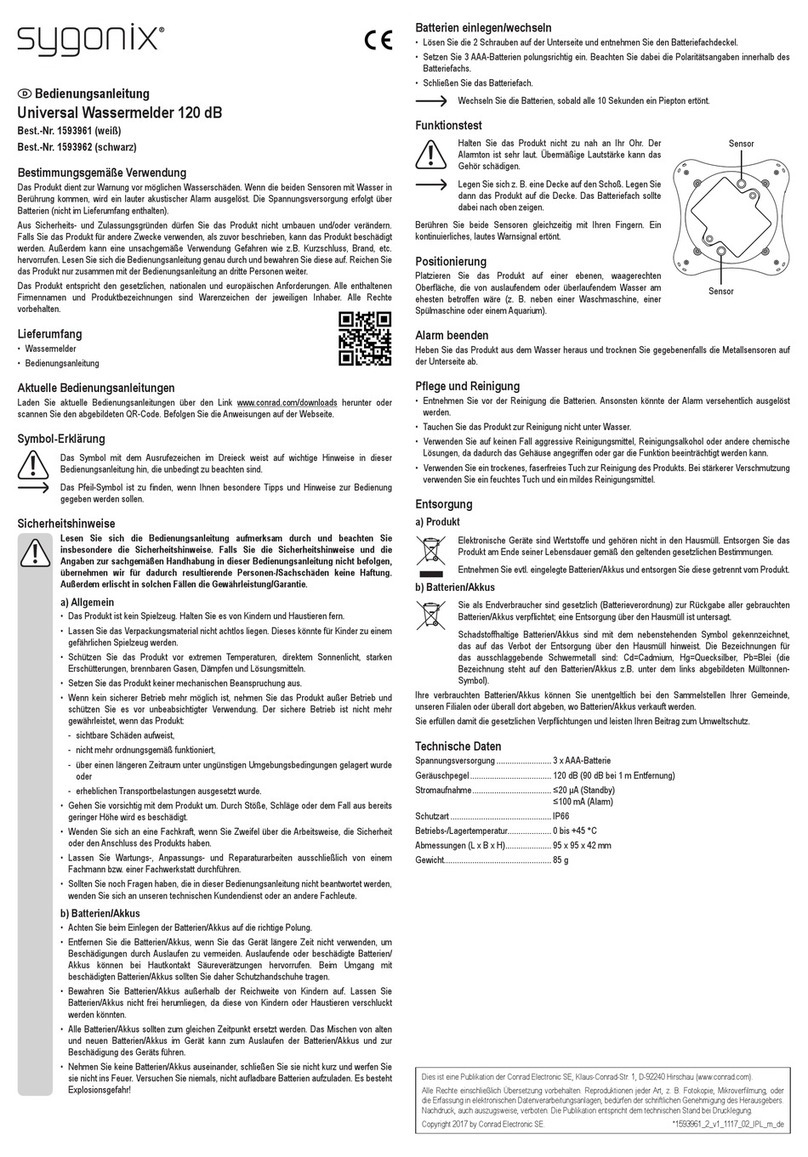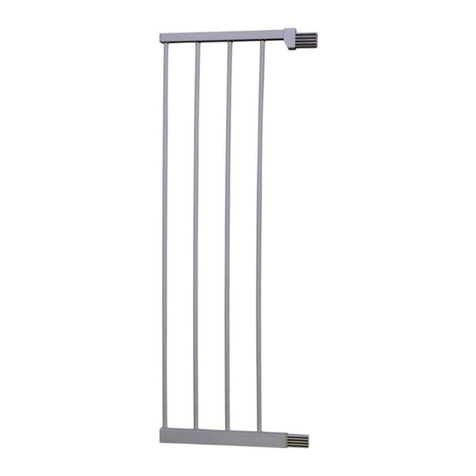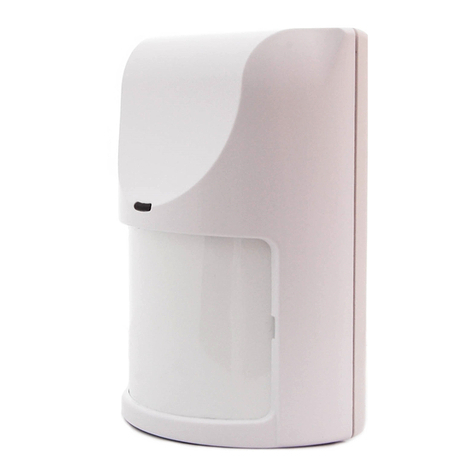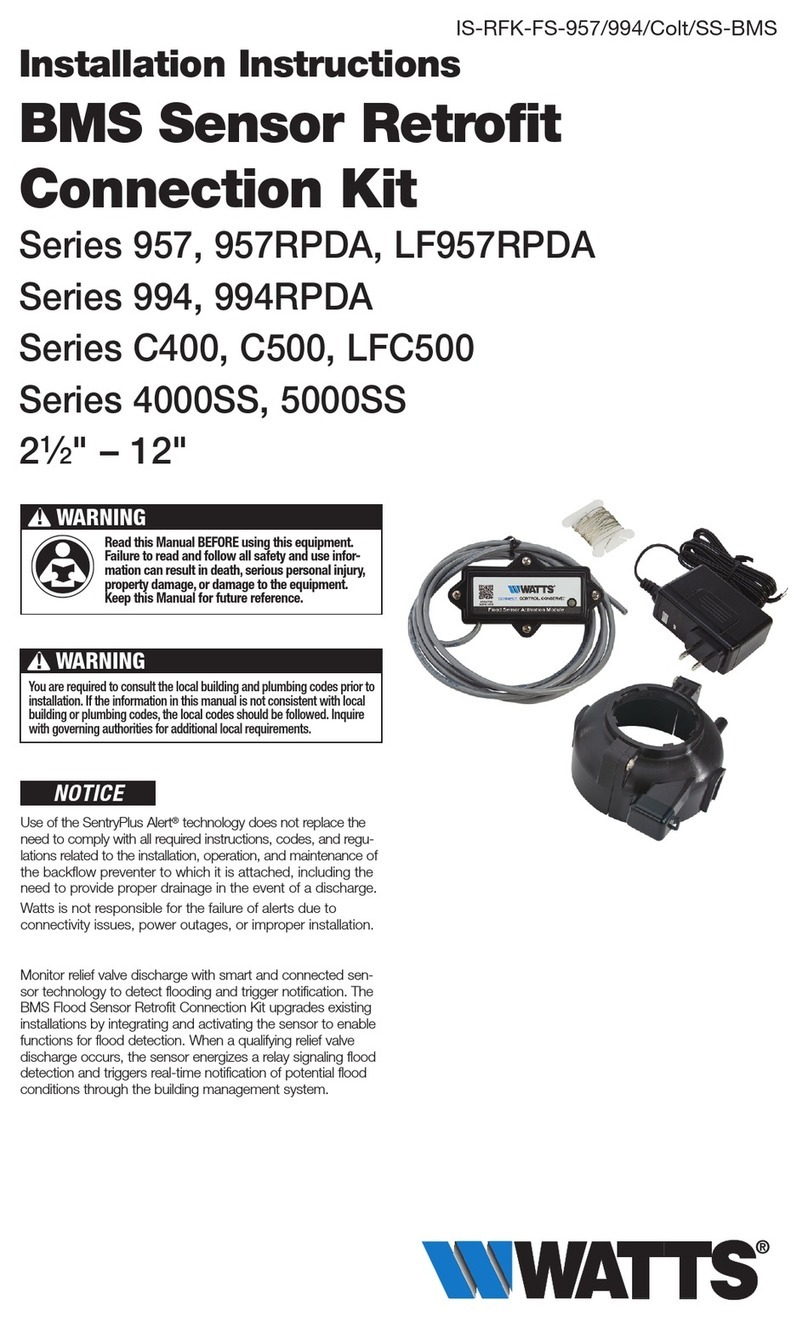Heath Consultants RMLD-CS User manual

OPERATOR
MANUAL
TM
Complete Solution

RMLD-CS Operator Manual
2 / 56
Table of contents
Overview ........................................................................................................................... 4
Proprietary Notice .............................................................................................................. 5
Warnings & Definitions ....................................................................................................... 6
Safety and Warning Information ...................................................................................... 6
Definitions ..................................................................................................................... 7
Symbols Used ................................................................................................................. 7
Specifications .................................................................................................................... 9
RMLD-CS Instrument and Accessories ............................................................................... 11
Battery, Charger and Charging Procedure .......................................................................... 14
Battery Pack ................................................................................................................. 14
Dual Bay Battery Charger .............................................................................................. 14
Charging Procedure ...................................................................................................... 15
Operating the RMLD-CS .................................................................................................... 17
Turning on the Instrument ............................................................................................ 17
Working with the Menu Items ........................................................................................ 17
Instrument Self Test .................................................................................................. 18
Audio Modes ............................................................................................................. 20
DMD (Digital Methane Detection) ........................................................................... 20
Real Time (Geiger) ................................................................................................ 20
Audio Warning Indications ...................................................................................... 21
Alarm Levels ............................................................................................................. 23
Spotter Control .......................................................................................................... 24
USB File Transfer ....................................................................................................... 26
Bluetooth .................................................................................................................. 28
WiFi .......................................................................................................................... 30
Data Logging ............................................................................................................ 32
Timezone .................................................................................................................. 33
User Profiles .............................................................................................................. 34
About Screen ............................................................................................................ 38
Additional Features ....................................................................................................... 39
Screen Mode - Survey ................................................................................................ 40
Screen Mode - Graph ................................................................................................. 41
Screen Mode - Image ................................................................................................ 42
Surveying with the RMLD-CS ............................................................................................. 43
Long Range Scanning ....................................................................................................... 45
Dealing With False Detections .......................................................................................... 47
How Does the RMLD-CS Measure Gas? .............................................................................. 48
Troubleshooting ............................................................................................................... 50
Maintenance .................................................................................................................... 52
Notes .............................................................................................................................. 53
Warranty and Repair ........................................................................................................ 54
Return Procedure ............................................................................................................. 55
Contact Information ......................................................................................................... 56

RMLD-CS Operator Manual
3 / 56

RMLD-CS Operator Manual
4 / 56
Overview
The HEATH Remote Methane Leak Detector - Complete Solution (RMLD-CS) is a highly advanced
technology, capable of detecting methane leaks from a remote distance. This technology makes it
possible to detect leaks without having to walk the full length of the pipe line, thus creating safer
surveys in areas that may be difficult to reach such as busy roadways, yards with dogs, fenced off
areas, and other hard to access places.
The RMLD-CS employs the same technology as the RMLD, known as Tunable Diode Laser Absorption
Spectroscopy (TDLAS). As the laser passes through the gas plume, the methane absorbs a portion of
the light, which the instrument then detects. Based on the local meteorological conditions, a given
amount of gas escaping from the ground will produce a plume that varies in size and uniformity of
concentration levels. The plume, by nature, is variable and dependent on the soil conditions,
temperature, wind, and leak rate.
The RMLD-CS operates under a variety of field conditions including a wide temperature range, light
rain and fog. Its rugged design will stand up to normal field use and operating conditions. Its
The RMLD-CS includes many new features which reduce costs and improve usage. These advanced
features include, but are not limited to:
User Interface Light Weight
Internal Data Logging Rechargeable and Replaceable Battery
WiFi Dual Charger
GPS Mobile App Support
Bluetooth BLE Vest Support
Color Camera Ergonomic Housing
Color Display

RMLD-CS Operator Manual
5 / 56
Proprietary Notice
The contents of this instruction manual are proprietary to Heath Consultants Incorporated.
Reproduction of this manual, in whole or in part, is prohibited without the express written
consent of Heath Consultants Incorporated.
Heath Consultants Incorporated operates under a continual product improvement program and
reserves the right to make improvements and / or changes without prior notification.
This manual supersedes all previous manuals for this instrument.

RMLD-CS Operator Manual
6 / 56
Warnings & Definitions
Safety and Warning Information
It is essential that users of this instrument read, understand and follow the instructions for operation
and maintenance. The precautions contained in this manual insure that the instrument is used in a
proper and safe manner.
DANGER
Indicates an imminently hazardous situation which, if not avoided, will result in death or serious
injury.
WARNING
Indicates a potentially hazardous situation which, if not avoided, could result in death or serious
injury.
CAUTION
Indicates a hazardous situation, which if not avoided, could result in minor or moderate injury.
DANGER: Do not use the device in an explosive environment.
DANGER:To reduce the risk of ignition of a flammable or explosive atmosphere, batteries must be
recharged only in a location known to be non-hazardous.
WARNING:Read and understand this manual fully before use.
WARNING:Follow the manual instructions and testing methods.
WARNING: The visible green Spotter laser is a Class IIIa (3R) laser product. Do not stare into beam or
view directly with optical instruments.
WARNING:Avoid direct eye exposure to the laser and do not point in the direction of others. Visible
and Invisible Lasers are deployed by this instrument.
WARNING: Substitution of components may impair intrinsic safety. No user serviceable components
contained within this instrument.

RMLD-CS Operator Manual
7 / 56
CAUTION: Use of controls or adjustments or performance of procedures other than those specified
herein may result in hazardous radiation exposure.
CAUTION: No attempt should be made to repair the instrument. Should the instrument not work
properly, or indicate a fault or warning, refer to the troubleshooting section of this manual.
Definitions
Beam Skip: Occurs when the IR beam jumps between a near object and a far away object. This may
cause a false detection. This can also occur on highly reflective surfaces (windows, water, ice, etc).
Control Module: The portion of the RMLD-CS with the keypad and display that clips onto a harness.
Dark Zone: An area not being scanned due to an obstruction. This may be an elevation change, the
side of a building, behind a curb, etc.
DMD (Digital Methane Detection): An advanced detection mode which, when activated, will only
alert the operator when there is a probable detection of methane.
Footprint: The surface area covered by the IR beam, increasing with distance. At 100 ft., this area is
22in diameter when shined against a vertical wall.
Infrared (IR): A wavelength of light just outside the range of the visible spectrum.
Laser Calibration Drift: A normal characteristic of tunable diode lasers is that the wavelength
calibration can drift slowly overtime. The RMLD-CS has a built in Self-Test/Calibration feature to
automatically maintain proper calibration.
ppm-m (Parts Per Million Meter): The product of the methane concentration times the width of the
plume.
Real Time: A mode that will emit a variable (continuous) Geiger beep rate relative to the
concentration of gas.
Spotter Laser: The green, blinking laser which guides the operator as to the location of the IR beam.
This laser can be activated through the button located on the keypad.
Tunable Diode Laser Absorption Spectroscopy: A method of gas detection that utilizes a laser that,
when shined through a cloud of methane, will be partially absorbed by the gas which can be
measured for gas concentration.
Symbols Used
Caution

RMLD-CS Operator Manual
8 / 56
Information
Consult Instructions for use
IP54 Ingress protection
Do not dispose of this product in the unsorted municipal waste stream. Dispose of
this product according to local regulations
Measurement Laser Radiation: Class I
Visible (Green) Laser Radiation: Class IIIa (3R)
Do not stare into beam. Avoid direct eye exposure.

RMLD-CS Operator Manual
9 / 56
Specifications
Tunable Diode Laser Absorption Spectropscopy (TDLAS)
Measurement Range 0 to 99,999 ppm-m
5 ppm-m at distances from 0 to 100 ft (30m)
IECEx 60079-1,-11; ATEX, UL913 (PENDING)
100 ft (30m) nominal. Actual distance may vary due to
background type and conditions.
Conical in shape with a 22diameter at 100 ft (55cm at 30m)
Detection Alarm Modes Digital Methane Detection (DMD): Audible tone when detection
threshold exceeded Adjustable Detection Alarm Level 1 to 999.
Real Time (RT):Continuous audio beep relative to concentration.
Unique audible pitch and indication on the display.
Self Test Built-in Self Test function verifies operation and adjusts laser
wavelength for maximum sensitivity. Test gas cell integrated
within carrying case.
Compliance EMC (EN61000-6-2, EN6100-6-4)
Radio Equipment Directive (2014/53/EU)
ETSI EN 301 489-1 v2.2.0
EN 61326-1:2013
47 CFR Part 15 & ICES-003
Laser Eye Safety IR Laser: Class I
Green Spotter Laser : Class IIIa (3R)
Do not stare into beam or view directly with optical instrument
Communications Bluetooth 4.2 BLE, WiFi, USB Dual Mode
Display 3.5" LCD
Operating Temperature 0° to +122° F (-17° to 50° C)
Humidity 5 to 95% RH, non-condensing
Instrument Protection IP54 (water splash and dust resistant)
3 lbs (approx)

RMLD-CS Operator Manual
10 / 56
Carry Case 21" x 17.5" x 9.5"
Battery Removable, rechargeable Li Ion pack, 10.8 VDC
2.6Ah
8 hours at 32 F (approx)
Battery Charger External, 110-240 VAC, 50/60 Hz Universal
2-3 hours full charge (approx)
Integrated into Dual Battery Charger

RMLD-CS Operator Manual
11 / 56
RMLD-CS Instrument and Accessories
Complete Kit Assembly - HPN 105301
(Includes Carry Case, Instrument, Test Cell, Carry Strap, Battery Charger, Battery Pack, USB Cable)
Instrument - HPN105354
This is the primary component of the RMLD-CS. In addition to the gas detection capability, it contains
the user interface, data logging interface, battery, power connector.
Carrying Case - HPN 105355
The carrying case provides protection for the instrument during storage and/or transportation.It also
has a built in cal cell for calibration. The instrument should be kept in the case while not in use.
Battery Pack - HPN 105384
1 rechargeable Li-Ion battery is supplied with unit. The RMLD-CS has an removable, rechargeable
Lithium-ion battery that provides the main power to the instrument. This battery is designed to
provide up to eight (8) hours of operating time when fully charged. The battery must be recharged
between uses to assure no interruption in use.

RMLD-CS Operator Manual
12 / 56
Battery Charger - HPN 105358
battery charging. The charger is a universal 100 - 240 VAC, ~ 1.6A 50-60 Hz with charger indicator on
the front of the housing. While charging the light will blink green, once a full charge is reached the
light will turn solid green.
Vest - HPN 105357 and HPN 105406
The RMLD-CS has an optional accessory type 2 class R vest. It has many pockets for equipment
placement. The pocket on the back can hold a pad for your notes/maps or a water pack.
Sizes: M/L and L/XXL
Strap - HPN 105516
Designed to minimize instrument weight and reduce fatigue during use.

RMLD-CS Operator Manual
13 / 56
USB Cable
The USB2 A to micro cable is for downloading data from instrument to computer.

RMLD-CS Operator Manual
14 / 56
Battery, Charger and Charging Procedure
Battery Pack
The RMLD-CS has a removable, rechargeable Li-Ion battery that provides the main power to the
instrument. This battery is designed to provide up to 8 hours of operating time when fully charged.
The battery must be recharged between use to assure no interruption in use.
The display features a remaining battery capacity (in percent) indicator in the top right of the screen.
Dual Bay Battery Charger
The dual bay battery charger supplied with the instrument has the ability to charge two batteries
simultaneously. An integrated metal bracket is included on the bottom of the charger to allow for
wall mount or fixed mounting options. For wall mounted or mobile applications, HEATH recommends
securing the battery to the charger using the captive screws attached to the battery pack.
The RMLD-CS is provided with a universal AC battery supply. The plug of the charger can be changed
to fit the type of receptacle used in your location.

RMLD-CS Operator Manual
15 / 56
Charging Procedure
DANGER: To reduce the risk of ignition of a flammable or explosive atmosphere, the battery must be
recharged only in a location known to be non-hazardous.
WARNING: Only use the HEATH supplied RMLD-CS battery charger to recharge the unit. Use of any
other charger may cause severe damage to the battery or electrical circuits.
CAUTION: To prevent damage to the battery or electrical circuits, always plug the charger into a
surge-protected outlet.
NOTE :The prolonged storage of battery inside or outside the instrument can lead to battery
chemistry being irreversibly damaged leading to permanent failure of the battery. When storing the
instrument or the battery for more than a month, charge the battery to 40-50% and store at room
temperature of about 60-70º F.
To charge the battery, perform the following procedure:
1. Turn instrument OFF.
2. Unscrew the two captive screws located on the bottom of battery pack. Remove from
instrument.

RMLD-CS Operator Manual
16 / 56
3. Insert the battery into the charger, ensuring it is all the way down.
a. Optional: Fasten captive screws into charger housing to prevent battery from
dislodging.
b. LED panel will illuminate to show the status of the battery charging.
4. Charging Modes (The charger station displays charging legend):
a. Flashing Green Battery pack charging
b. Solid Green - Battery pack fully charged
c. No light Battery not present or not connected properly
d. Red Fault, replace battery pack
i. Position battery into the other bay, if still red, then try another battery.
ii. If the light is still red send to repair or replace.
5. Once the battery is fully charged, power up the instrument and verify the battery capacity on
the screen displays it is charged.
NOTE: Full charge time is approximately 2-3 hours.
NOTE: To obtain full battery capacity, charge the battery when the ambient temperature is above 50º
F (10º C).

RMLD-CS Operator Manual
17 / 56
Operating the RMLD-CS
Turning on the Instrument
To turn on the instrument, Press and Hold the middle button for 3 seconds.
To turn off the instrument, Press and Hold the middle button for 3 seconds.
Working with the Menu Items

RMLD-CS Operator Manual
18 / 56
Instrument Self Test
The RMLD-CS has a built-in function to perform a Self-Test of the laser wavelength. The self-test
feature should be performed daily before survey to ensure that the instrument is operational. A Self-
Test log file is recorded and stored on the RMLD-CS instrument.
NOTE: No yearly factory calibration required unless instrument fails the self-test (repeatedly) or
presents other problems.
NOTE: The self-test takes approximately one to three minutes to perform.
To perform the Self-Test and Calibration, the following procedure should be followed:
1. Turn on the instrument and allow instrument to successfully boot up.
2. Press the MENU button and select the SELF-TEST option.
3. The screen will display and guide the next steps for the operator to follow within 10 seconds
(enough time for the steps).
4. Place the instrument in its designated area in the carrying case, making sure it is all the way in
place and flat.
5. Status of test will be present on the display and by audible tones.
a. A continuous one beep every second means the instrument passed the self-test.
b. If the instrument fails, two beeps every second will play and operator should repeat
self-test.
c. If instrument fails on a third attempt, contact Heath Consultants Factory Service.
What if the instrument failed the Self-Test?
Most often, the causes are due to the instrument not being properly positioned in the case, the case
was moved during the test, the laser wavelength has drifted, or the battery level is too low to
perform the test. Ensure sufficient battery charge before attempting self-test procedure. Make sure
the instrument is in its proper position, all the way down, and flat. After rechecking the above,
repeat the Self-Test procedure above.
CAUTION: Should the instrument not pass after several attempts, do not use the instrument for
survey work until the problem is corrected. Contact HEATH for further assistance.

RMLD-CS Operator Manual
19 / 56
NOTE: Laser wavelength drift is a normal characteristic of the RMLD-CS. Normally the rate of drift is
low and will not affect the Self-Test if performed on a regular basis. Survey work conducted with an
instrument which has drifted and was not self-tested may need to be redone. If instrument is not
able to successfully perform a self-test after three attempts, contact HEATH for assistance.

RMLD-CS Operator Manual
20 / 56
Audio Modes
DMD (Digital Methane Detection)
The Digital Methane Detection (DMD) mode is a highly sophisticated detection algorithm that greatly
enhances the use of the RMLD-CS. In most situations, the operator should survey with the DMD
mode turned on. To turn on the DMD mode, press the MENU button, select AUDIO MODE, then select
DMD.
While using the DMD, no sound will be heard until a detection of methane occurs.
The DMD will indicate detection when the ppm-m exceeds the average background plus Alarm
Detection Threshold level, or when the reading is excessive. While the low light warning is sounding,
the RMLD-CS may still be able to detect very large gas concentrations, indicated by frequent, fast
beeps.
The Alarm Detection Threshold controls the sensitivity of the DMD. The operator can adjust the
Alarm Detection Threshold.
or procedure to set it. Set the Alarm Detection Threshold such that the false detection rate is low,
while not too high that leaks are missed.
Real Time (Geiger)
The Real Time mode of the RMLD-CS plays a variable (continuous) beep that is relative to the
instantaneous concentration level. The faster the unit beeps, the higher the methane concentration
level. Note that the beep frequency increases as you scan at a further distance due to the ambient
amount of methane in the air.
Other manuals for RMLD-CS
2
Table of contents
Other Heath Consultants Security Sensor manuals
Popular Security Sensor manuals by other brands
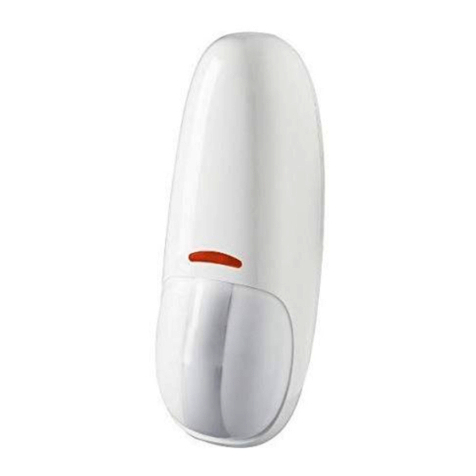
Visonic
Visonic CLIP SMA installation instructions

Roaring Forties
Roaring Forties SMA2751 owner's manual

Kompernass
Kompernass BA 105 A1 operating instructions
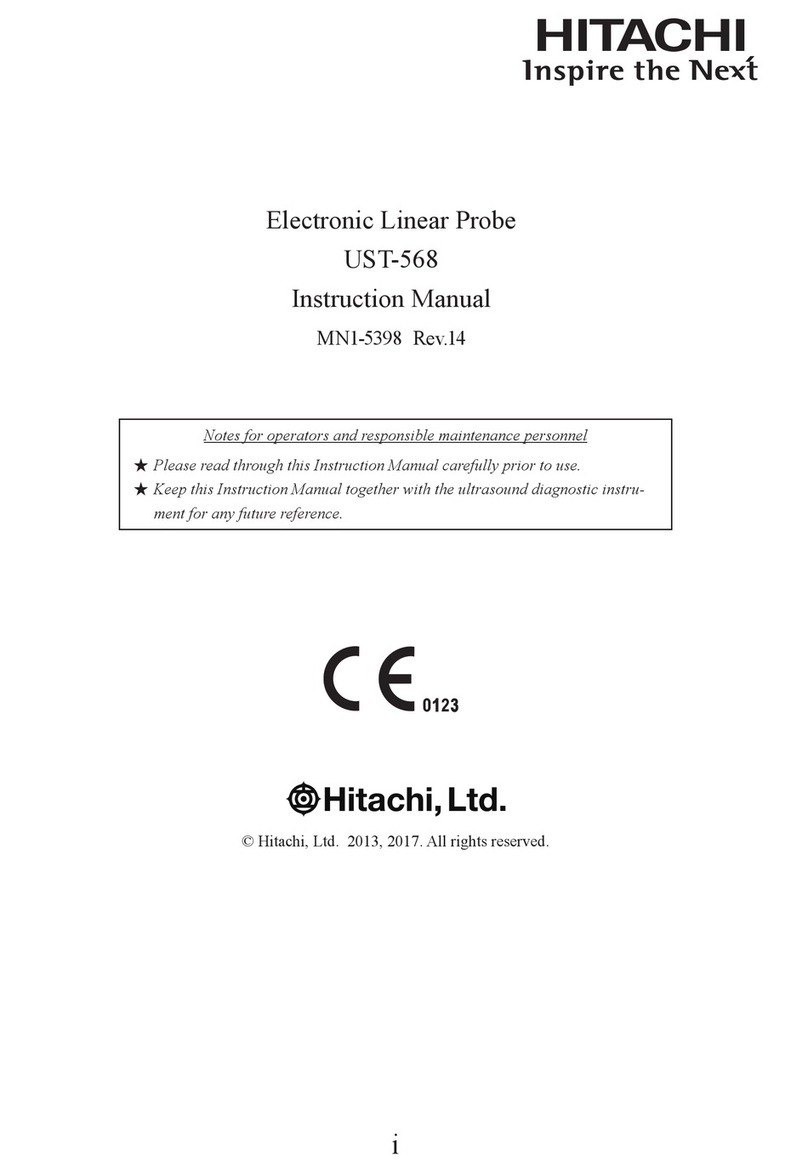
Hitachi
Hitachi UST-568 instruction manual
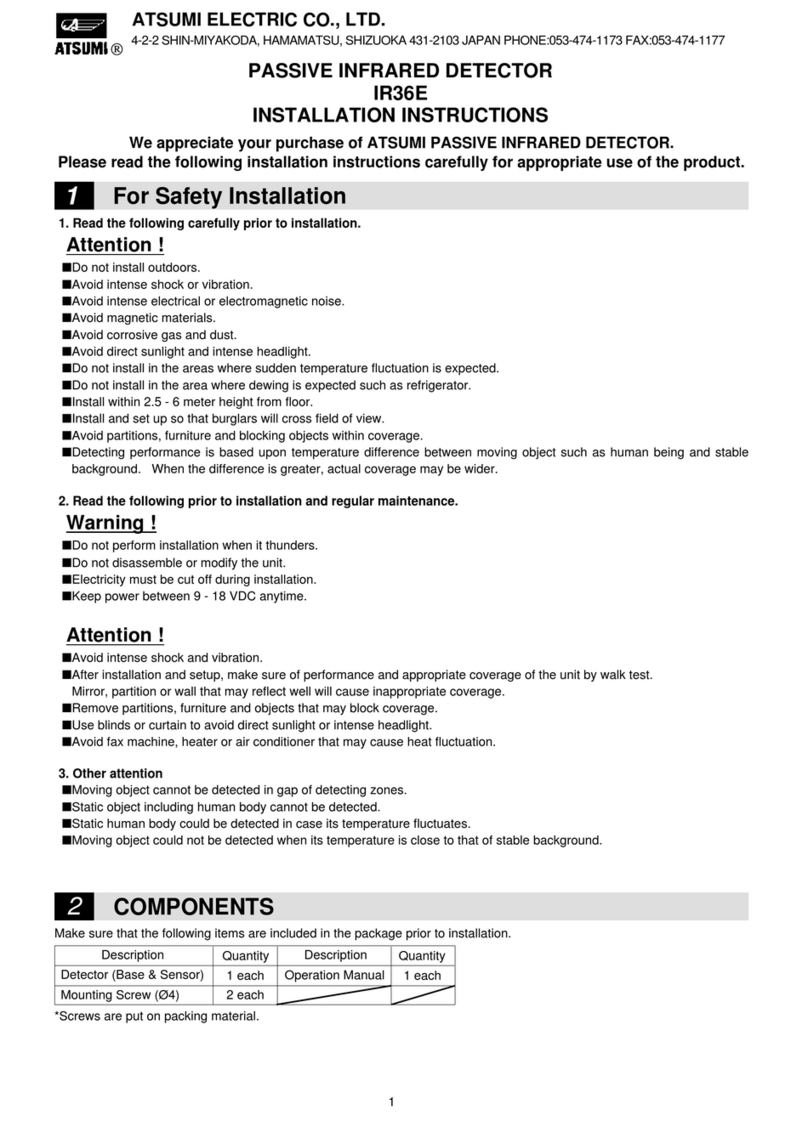
Atsumi Electric
Atsumi Electric IR36E installation instructions
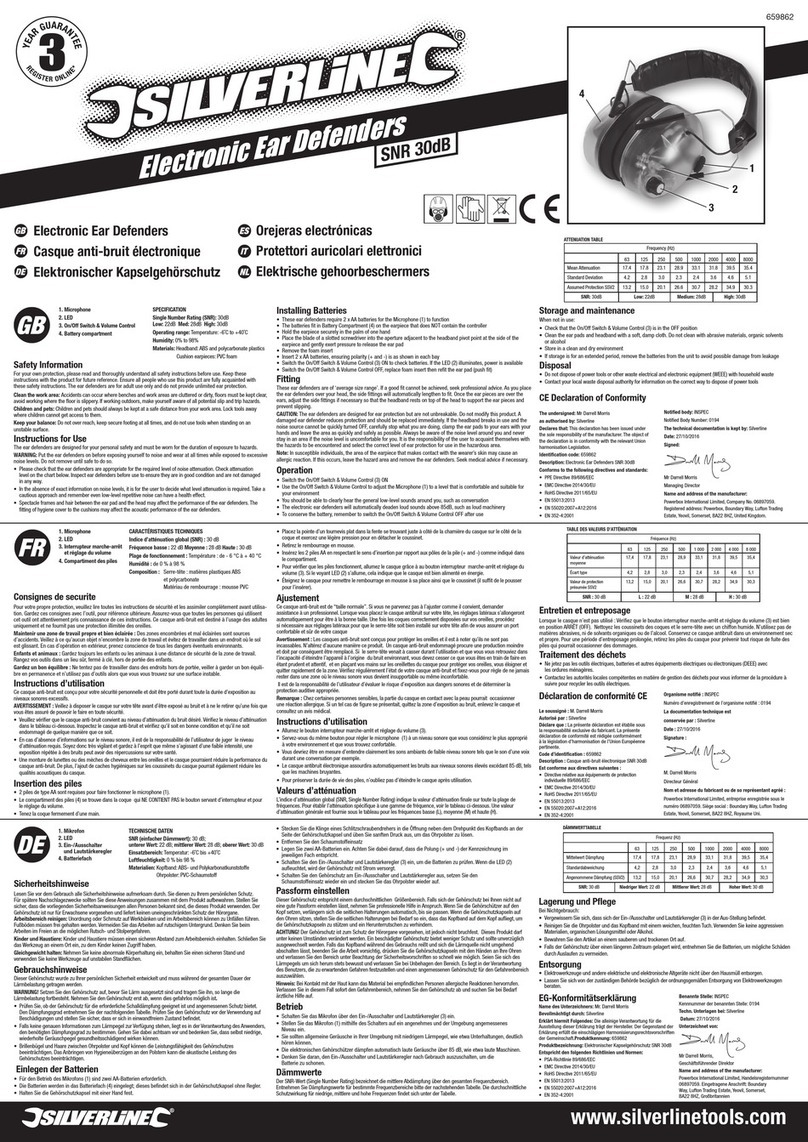
Silverline
Silverline 659862 quick start guide

Homematic IP
Homematic IP HmIPW-SCTHD Installation instructions and operating manual

Berker
Berker 9420 Series Operation and assembly instructions
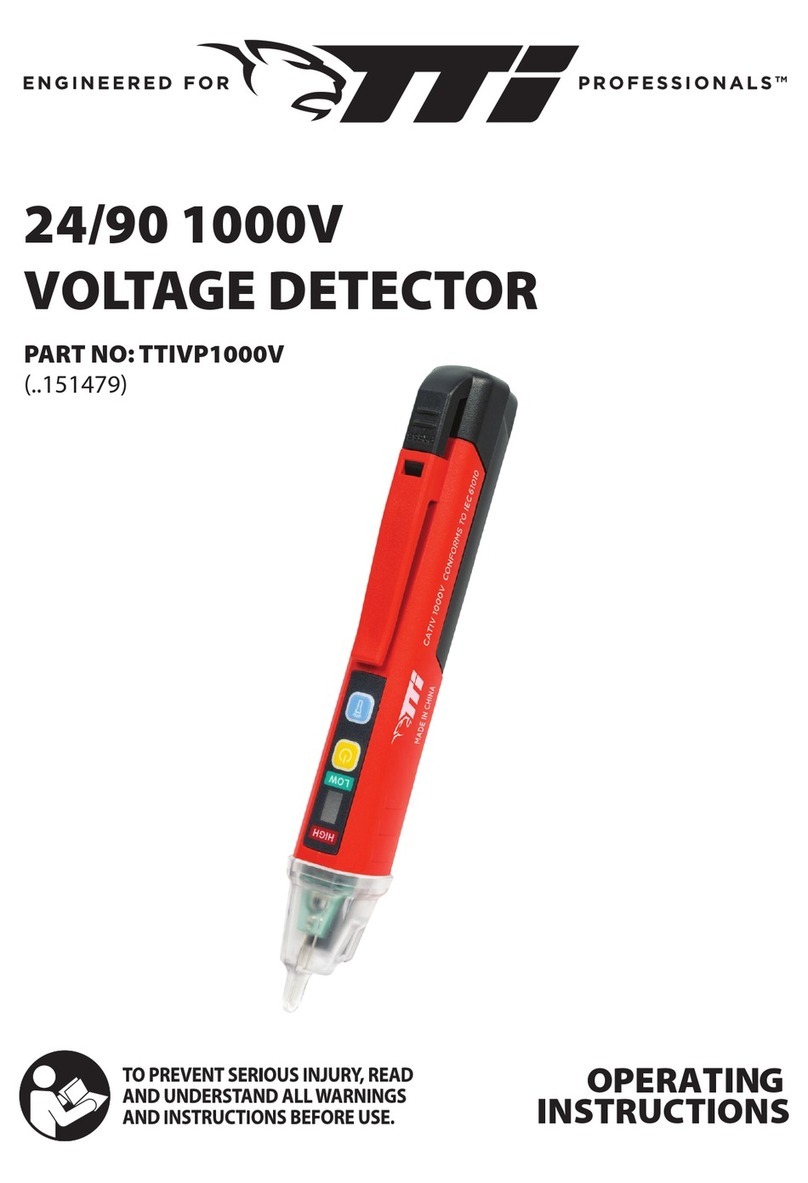
Total Tools
Total Tools TTi TTIVP1000V operating instructions

Konyks
Konyks Senso Charge quick start
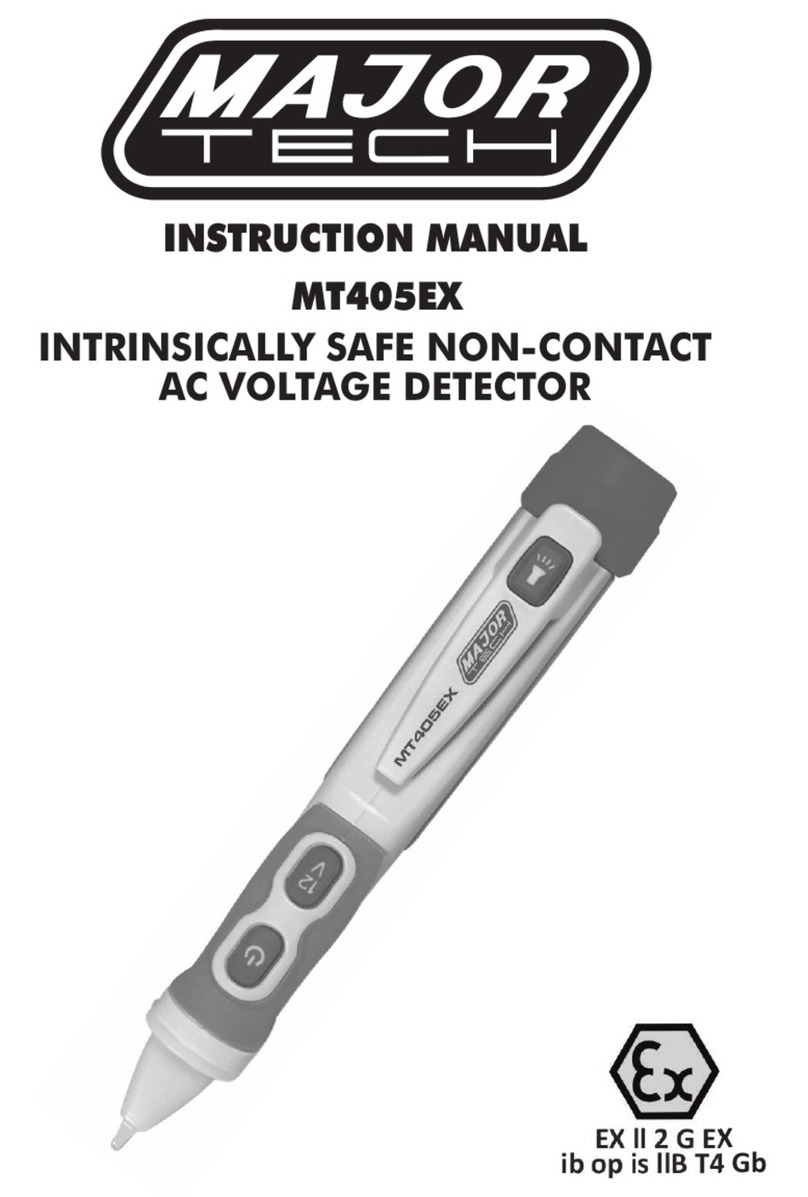
Major tech
Major tech MT405EX instruction manual

EOT
EOT ET-3500AF user guide
